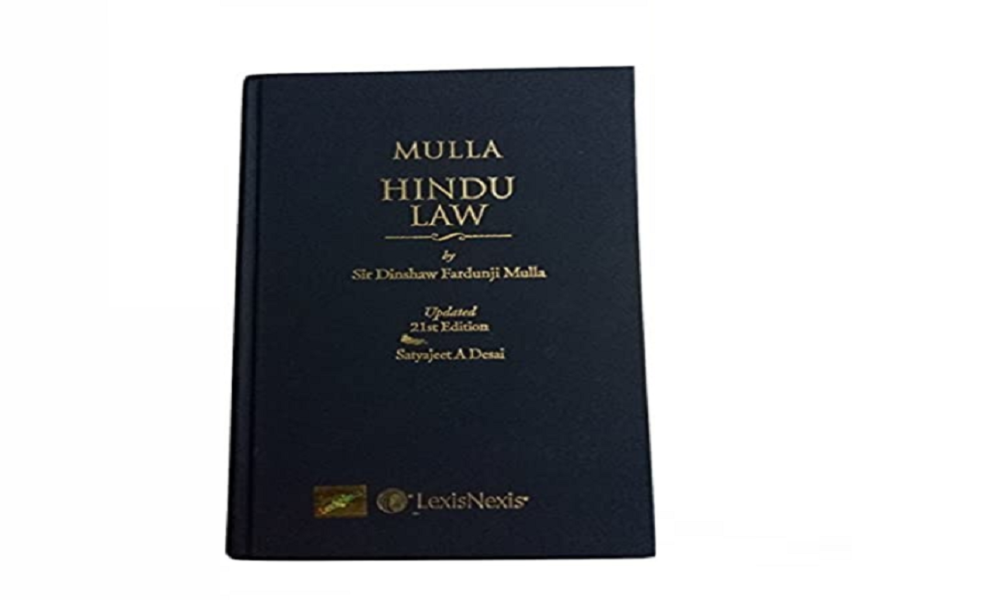The Hindu Undivided Family is, as Hindu jurisprudence and law recognise, the normal condition of a Hindu family.
Hindu Undivided Family: Known by its popular acronym HUF, a joint Hindu family consists of all persons who have lineally descended from a common ancestor, and includes their wives and unmarried daughters. A daughter ceases to be a member of her father’s family on marriage, and becomes a member of her husband’s family.
Mitakshara Coparcenary: A Hindu Coparcenary is a much narrower body as compared to the Hindu Undivided Family. Generally speaking, it is a body of individuals who acquires interest by birth in the joint family property. They are the son, grandson and great grandson of the holder of the joint property for the time being. Therefore to become a coparcener, one has to be born into the family.
Before going any further, it is clarified that this article only deals with the Mitakshara system of Hindu law prevalent in a major portion of India, and not the Dayabhaga, which prevails in Bengal.
I propose to discuss some critical aspects of the Hindu Undivided Family with specific emphasis on the Mitakshara coparcenary.
The beginning of an HUF: A Hindu Undivided Family comes into existence when a man gets married and has children. It consists of his wife sons and daughters. It is a body which fluctuates with births, deaths, marriage and adoption. A daughter, though a part of her father’s HUF, ceases to be a member and becomes a member of the HUF of her husband.
Reforms in Hindu Law: In 1955 and 1956, a sea change was brought about in the Hindu laws. Whereas Shastric or the ancient law prevailed up to 1955, major changes were afoot in 1955 and 1956, when four new legislations were put into place being the Hindu Succession Act, the Hindu Marriage Act, The Hindu Adoptions and Maintenance Act and the Hindu Minority and Guardianship Act. We are concerned with the Hindu Succession Act in this article.
The development of the personal law applicable to Hindus has been from time to time refined, prompted by judicial precedents and also legislations such as The Hindu Succession Act, 1956 which has expanded and broadened the scope of its applicability. The passing of the amendments to the Hindu Succession Act in 2005 merited and conferred equality of status to daughters as coparceners, thus paving the way for inclusive application of the law, but now in an attenuated form. The progression of the Hindu law has therefore demonstrated it as being reformist and not being averse to adapting itself to neoteric situations, seeking to blend the ancient with the contemporary, resulting in adaption to extant situations in modern society and redeeming itself from becoming archaic and stunted while retaining many of its essential charesterics.
Undivided coparcenary interest: The essence of a coparcenary under Mitakshara law is unity of ownership. The ownership of the coparcenary property is in the whole body of coparceners. No coparcener can claim a particular portion, as the whole concept is of unity of holdings. It changes with births and deaths in the family. Thus, it is based upon the concept of survivorship and is a fluctuating inter¬est, capable of being enlarged by deaths in the family, and liable to be diminished by births in the family.
It would be seen that whereas an HUF consists of a man, his wife and his sons and daughters, a coparcenary consisted only of males born in the family. Upon death of a coparcener, the property would devolve by survivorship i.e. amongst the surviving coparceners.
Changes in the law: The Hindu Succession Act brought about major changes in the law. A pressing need for reform had been felt as especially the females in the family had only a right of maintenance. The old section 6(which has now been replaced in 2005) made a provision that upon the death of a coparcener, if he had left behind a female relative (say his wife), the share of the coparcener would devolve upon his female relative and not by survivorship. A deeming provision was introduced stating that the deceased coparceners share would be the notional share that would have been allotted to him as if a partition had taken place just before his death. This was done in order to find out and calculate his share which would then be available for his female relatives.
It is important to mention here that a wife cannot ask for a partition when her husband, is alive. But the voluntary and discretionary right is available to the wife of a deceased coparcener, upon his death. A very important aspect of Mitakshara coparcenary as regards a partition is that it is always voluntary and not statutorily compulsory. Once a coparcener dies, his widow can either choose to continue within the family or chose to seek a partition, claim her share and sever herself from the family.
Interpreting the old unamended section 6 the Supreme Court had very succinctly summarised and analysed the position in State of Maharashtra v Narayan Rao (AIR 1985 SC 716) and held that “ There is no doubt that the right of a female heir to the interest inherited by her in the family property, gets fixed on the date of the death of a male member under section 6 of the Act but she cannot be treated as having ceased to be a member of the family without her volition as otherwise it will lead to strange results which could not have been in t h e c o nt e mp l at i o n o f Parlia¬ment when it enacted that provision”.
The court therefore clearly recognised the fact that partition was a voluntary act and that the deeming fiction was only for finding out the share of the widow. The section nowhere stated in clear terms that an actual partition would take place upon the death of any one coparcener. That would lead to something that the legislature had never contemplated. The reason being that had the legislature stated that upon the death of any coparcener, the coparcenery would come to an end, it would have said so in the section itself.
In a subsequent decision in Uttam v. Saubhag Singh (AIR 2016 SC 1169) and a few other decisions that follow it, the Supreme Court has however held that the above situation upon death of a coparcener would lead to the following consequences, two of which are mentioned here as being important. The court said that-
“In order to determine the share of the Hindu male coparcener who is governed by Section 6 proviso, a partition is affected by operation of law immediately before his death. In this partition, all the coparceners and the male Hindu’s widow get a share in the joint family property.”
“On a conjoint reading of Sections 4, 8 and 19 of the Act, after joint family property has been distributed in accordance with section 8 on principles of intestacy, the joint family property ceases to be joint family property in the hands of the various persons who have succeeded to it as they hold the property as tenants in common and not as joint tenants.”
The court therefore held that upon the death of a coparcener, a partition would be affected and that the property would be distributed and the family would cease to be a joint family.
I have commented extensively in Mulla’s Hindu Law as to why I am in respectful disagreement with the above view. Space constraints limit me from making a full comment in this article. Suffice it to say that, as stated earlier, if the legislature wanted that a partition would take place immediately upon the death of a coparcener, it would have stated so clearly and it would not have introduced the concept of only a deeming fiction, which, as I have stated in Mulla’s Hindu Law, was only limited to fixing the share of the female relative and would not lead to a full partition, as is also held in State of Maharashtra v Narayan Rao. As I have stated earlier, partition is a voluntary act. It is not statutorily compulsory. Further, the female relative may chose not to seek her share in the property ,at her option, and may chose to continue with the family , the only difference being that her share would be fixed and locked as on the date of death of her husband. Nothing further. And as stated, the legislature had not stated that a partition would result or it would have said so clearly in the unamended section itself without limiting itself only to the deeming fiction.
Change brought about by amended Section 6: In 2005, a change was brought about in the Hindu Succession Act. The major and welcome change being that the daughters born in a Mitakshara coparcenary were treated as coparceners along with the sons. I resist the temptation of quoting the full provision here. Suffice it to say that daughters and sons in a Mitakshara coparcenary are now treated equally, whenever they are born. The priviso being that if a partition or alienation had taken place before 20th December, 2004, the female would not be entitled to a share. Therefore the section stipulates that the property must not have been partitioned or alienated before that date.
Interpretation of the new provision: The section, since it came into force has been the subject of interpretation by all courts including the Supreme Court. I, however limit myself in this column to two decisions of considerable importance as to the interpretation. In Prakash v Phulawati, (2015(11) SCALE 643), the Supreme Court held that “the rights under the amendment are applicable to living daughters of living coparceners as on 9 September 2005 irrespective of when such daughters are born”.
It is with great respect opined that the above view does not appear to be altogether correct. It must be remembered that the section was amended by including females born into the coparcenary and conferring upon them, equal rights as the sons. If, therefore, stress is laid upon the words used in the section that ‘ daughters of a coparcener’ are conferred the same rights, it cannot mean that the coparcener (father) has to be alive for such conferment, when the section itself stipulates that the rights amongst the sons and daughters are the same. An artificial barrier cannot be created by interpreting the words ‘ daughter of a coparcener’ must mean that the coparcener must be alive for the daughter to claim her rights as a coparcener , and as the amendment itself is a result of the application of Article 14 of the Constitution which speaks of equality.
The above section had come up before another bench of the Supreme Court in Danamma v. Amar (2018) 3 Supreme Court Cases 343, where the court, quoting extensively from Mulla on Hindu Law, observed that the law relating to a joint Hindu family governed by the Mitakshara law has undergone unprecedented changes. The said changes have been brought forward to address the growing need to merit equal treatment to the nearest female relatives, namely daughters of a coparcener. The section stipulates that a daughter would be a coparcener from her birth, and would have the same rights and liabilities as that of a son….. These changes have been sought to be made on the touchstone of equality, thus seeking to remove the perceived disability and prejudice to which a daughter was subjected…. Section 6, as amended, stipulates that on and from the commencement of the amended Act, 2005, the daughter of a coparcener shall by birth become a coparcener in her own right in the same manner as the son. It is apparent that the status conferred upon sons under the old section and the old Hindu Law was to treat them as coparceners since birth. The amended provision now statutorily recognizes the rights of coparceners of daughters as well since birth. The section uses the words in the same manner as the son. It should therefore be apparent that both the sons and the daughters of a coparcener become coparceners from birth’. The court held that it was by virtue of birth that the daughters were entitled to the same rights.
In another matter, Vineeta Sharma v. Rakesh Sharma, the, the Supreme Court having noticed the divergence of views in the above two cases, the issue is pending hearing before a larger bench.
It is respectfully opined that, If daughters (as per the amendment in 2005) have been conferred the same rights as the sons, an artificial condition as held in Prakash v. Phulavati, cannot be read into the section by holding that the words ‘daughter of a coparcener’ mean that the coparcener must be alive when the amendment came into force for the daughter to claim her rights as a coparcener. The only cut off point in the section is 20th December, 2004, as the daughter cannot claim any right if there has been a partition or alienation of coparcenary property before that date. If the section were to be interpreted as conferring upon a daughter, the same rights as the sons only upon the condition that the father must be alive on the date that the amendment came into force, actually does away, in the opinion of the author, the ethos and purpose of the ameliorative amendment. The existence of the father cannot, as interpreted, be a precondition, when the legislature itself has not so stipulated. The words ‘ daughter of a coparcener’ are only descriptive in nature. There can obviously not be two different yardsticks for conferment of equal rights a s b e t we e n s o n s a n d daughters, who are situated similarly and equally. The date 9th September 2005 is only of relevance that the amendment came into effect on that date. It cannot be linked to the fact that the father must be alive on that date. The only requirement is that the daughter must be alive when the provision came into force. The only further caveat being that the property must not have been subject matter of a partition before the above date or an alienation (sale etc.). The view therefore, taken in the decision of Danamma v. Amar appears to be eminently correct.
Daughter as Karta: In a Mitakshara coparcenary, normally the eldest male member would be the Karta or manager. Since before 2005, daughters were not considered as coparceners, the daughter could not have become a Karta. The Hindu Succession Act, 1956, has been amended by the Hindu Succession (Amendment) Act, 2005. As a result of the amendment, daughters have been conferred equal status as that of the sons in a Mitakshara coparcenary. With the inclusion of daughters of a coparcener with equal rights as those of sons, the ascension of a daughter as Karta or Manager can no longer be ruled out. This has been my firm belief immediately upon the amendment coming into force, and as I have commented in Mulla’s Hindu Law. The amended section therefore, leaves no manner of doubt that the position of Karta also cannot any longer, be the exclusive domain of only a male coparcener.
This would however be dependent upon various factors, such as the presence of other males in the family, and the seniority of the daughter qua such male coparceners. In the humble opinion of the author, if therefore, there is a male coparcener capable of acting as Karta, he would become the Karta. If however, the daughter is senior to such male coparcener, the daughter could become the Karta. The Delhi High Court in the case of Sujata Sharma v. Manu Gupta has held, quoting Mulla’s Hindu Law that the daughter can become a Karta.
The amendments to the Hindu Succession Act are progressive and fulfil the requirement of equality as enshrined in Article 14 of the constitution. which, in fact, was the touchstone based upon which the changes were brought about.
Senior Advocate Satyajeet A. Desai practises at the Gujarat High Court. He is Revising Author, Mulla’s Hindu Law & ST Desai on The Law of Partnership in India.







